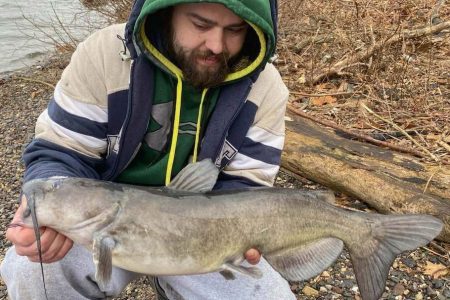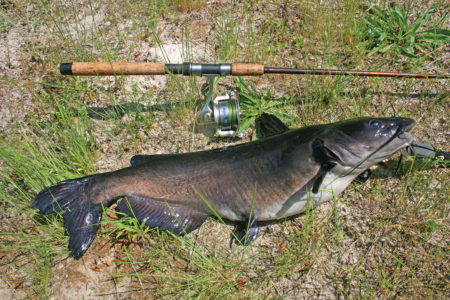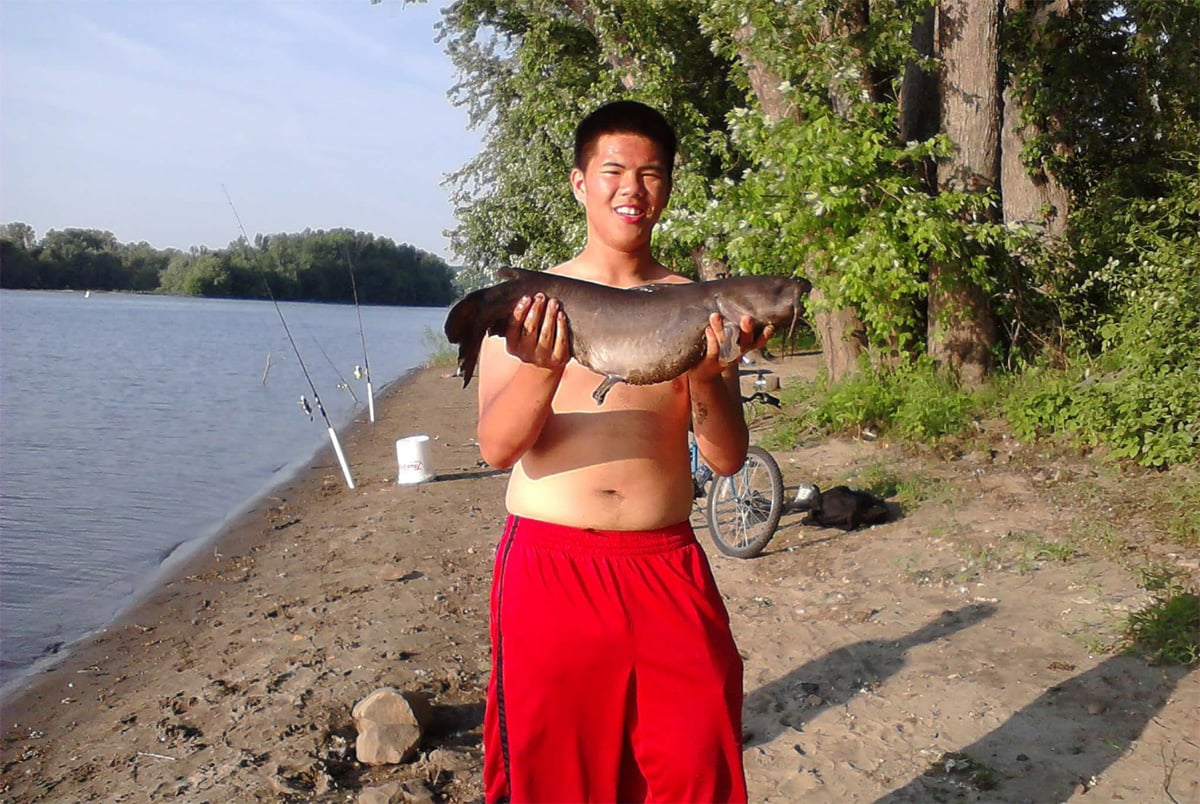
Fishing for catfish, both white and channel, is a relatively easy endeavor that can turn a bluegill buster into a trophy hunter. These bottom-feeding fish are found in almost all lakes, ponds and rivers of New England. Some states, like Connecticut for example, even have a channel catfish stocking program to supplement self-sustaining populations. There really is no shortage of catfish fisheries in our region. Channel catfish are the largest catfish in the Northeast with double-digit specimens regularly landed in some of the larger water bodies. My personal best, for example, weighed just over 18 pounds. Therefore these big whisker-wielding fish provide some amazing angling opportunities throughout the region.
I base the majority of my catfish fishing around scent, as channel catfish are not notorious predatory feeders, but rather scavengers of the deep. Catfish have whiskers, and it’s not because of no shave November! They have earned the nickname, “the swimming tongue” due to the taste buds all over the outside of their bodies, including their whiskers. At the base of their whiskers are their nostrils, known as nares. These nares are extremely sensitive to odor. Therefore, I always make sure to present a smelly bait to attract large catfish.
Occasionally, chumming or pre-baiting, a method many carp fishermen are familiar with, is effective for catfish as well. Prior to fishing new spots, I make it a point to scout them out. During this scouting mission I can typically determine whether or not a chum slick would be helpful. Things you may want to take into consideration before chumming are: the presence of current, depth, size of the body of water, and alternative angling pressure. My favorite chum is recycled from my ice fishing season. The live baits that don’t make it, as well as panfish carcasses and skins, make great oily chum when ground up properly. Other baits like corn, bread, dog food, etc. have proven to be effective for large bottom feeders, but be sure to check your local regulations before chumming.
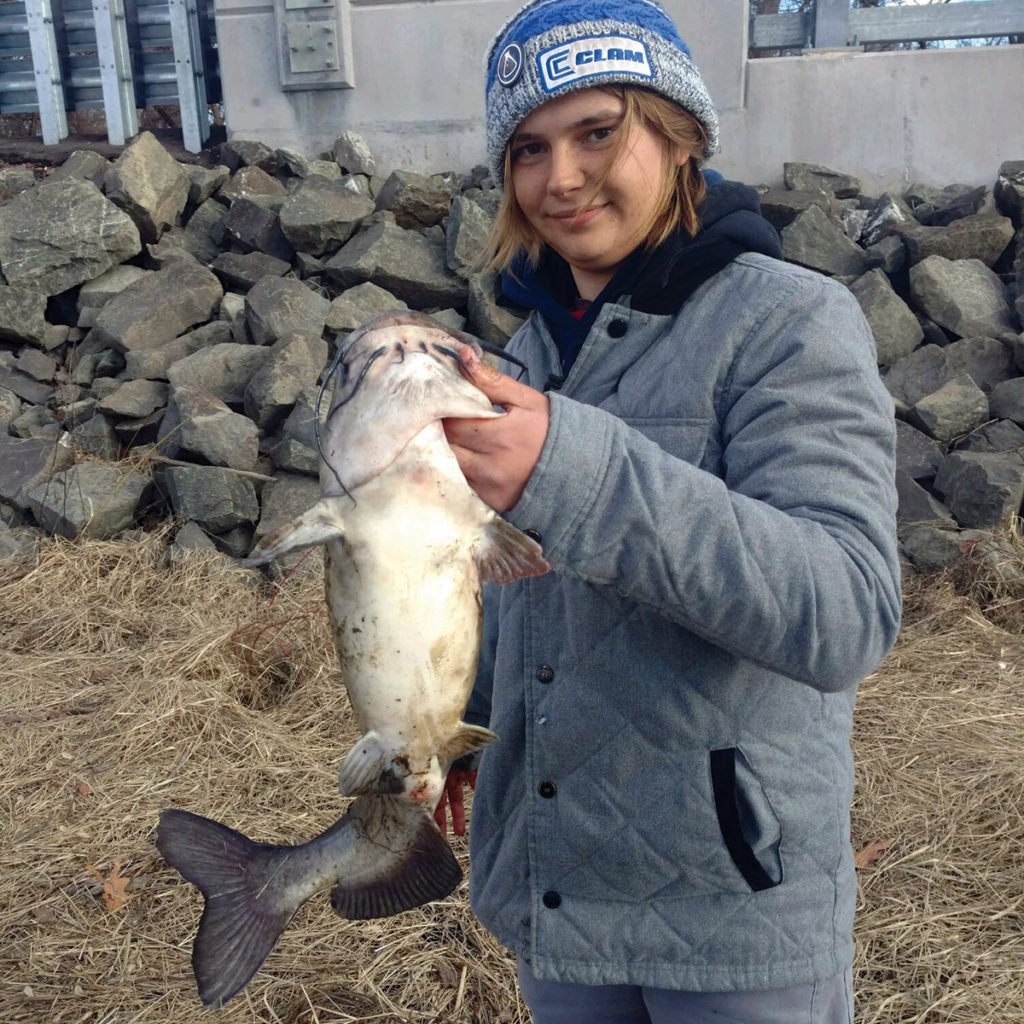
Rigging up
The gear I use for catfish is relatively simple. I like to use a 7- to 9-foot, medium-heavy rod paired with a size 5000 reel or larger, spooled with 20-pound test braided line. Fishing with braided line allows me to detect more bites, enabling a higher hook-up ratio. Braided line is also key for cutting through current, while monofilament has a thicker diameter and is more prone to be dragged away with the tide. The “no-stretch” factor of braid also allows the angler to really feel the famous catfish head shakes, commonly referred to as the “death roll.”
On the terminal end of my rigging I slide on what is known as a fish-finder or sinker slider. I prefer the fish-finders with the rounded out insides as they are designed for braided line and give much less wear and tear on your mainline. Put a small fluorescent-colored bead on your mainline in between your fish-finder and your swivel to protect the knot. Attached to the fish-finder is your weight to hold bottom. In areas with little to no current, I prefer to use WOO tungsten weights as the tungsten presentation is much smaller than that of a lead weight and therefore allows your bait to look more natural on the bottom. In areas of heavy current, I stick to the basics; heavy lead anywhere from 2 to 8 ounces.
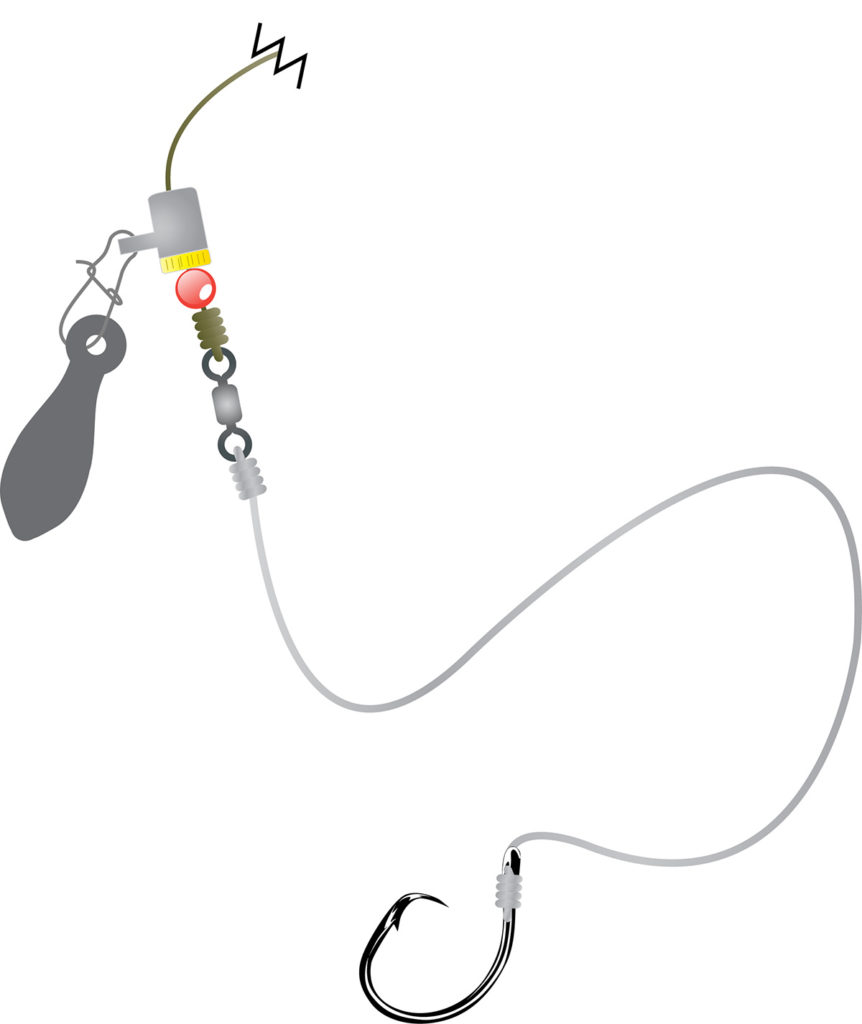
I attach a barrel swivel to my main line below the fish-finder, making sure that the swivel is larger than the hole on the fish-finder. I prefer to use SPRO swivels as they are strong, dependable, and have never let me down. Next comes your leader. I use Seaguar Blue Label Fluorocarbon leader material in 30-pound test. Fluorocarbon is less visible in the water than monofilament, again making your bait look more natural. I snell a 5/0 Owner Circle hook to the leader as this provides me the highest hook-up ratio.
Bait Options
As far as a bait goes, there is hands down no better bait than nightcrawlers. I have found that two to three nightcrawlers balled up on a circle hook is irresistible to any nearby cats. Again, these fish are a swimming tongue, so scent is the key to catching fish, and nightcrawlers are an easily accessible smelly bait.
When it comes to targeting larger channel catfish, the idea of “bigger the bait, the bigger the fish” generally holds true. As far as big bait, I use fresh cut bait, cut into chunks or strips, but frozen bait works fine. Bunker, bluegill, perch, fallfish, shiners, etc. make great catfish baits, and my favorite bait when targeting lunker catfish, is an approximately 2×2 tail chunk of a yellow perch. Many of my largest fish have fallen to that deadly combination. I run my circle hook parallel to the spine of the perch, essentially threading the bait chunk on the hook. This gives anglers who are frustrated with catching small panfish an opportunity to put those trash fish to good use, putting them on a larger fish. It also is a great way to put unused ice fishing baits to use come springtime.
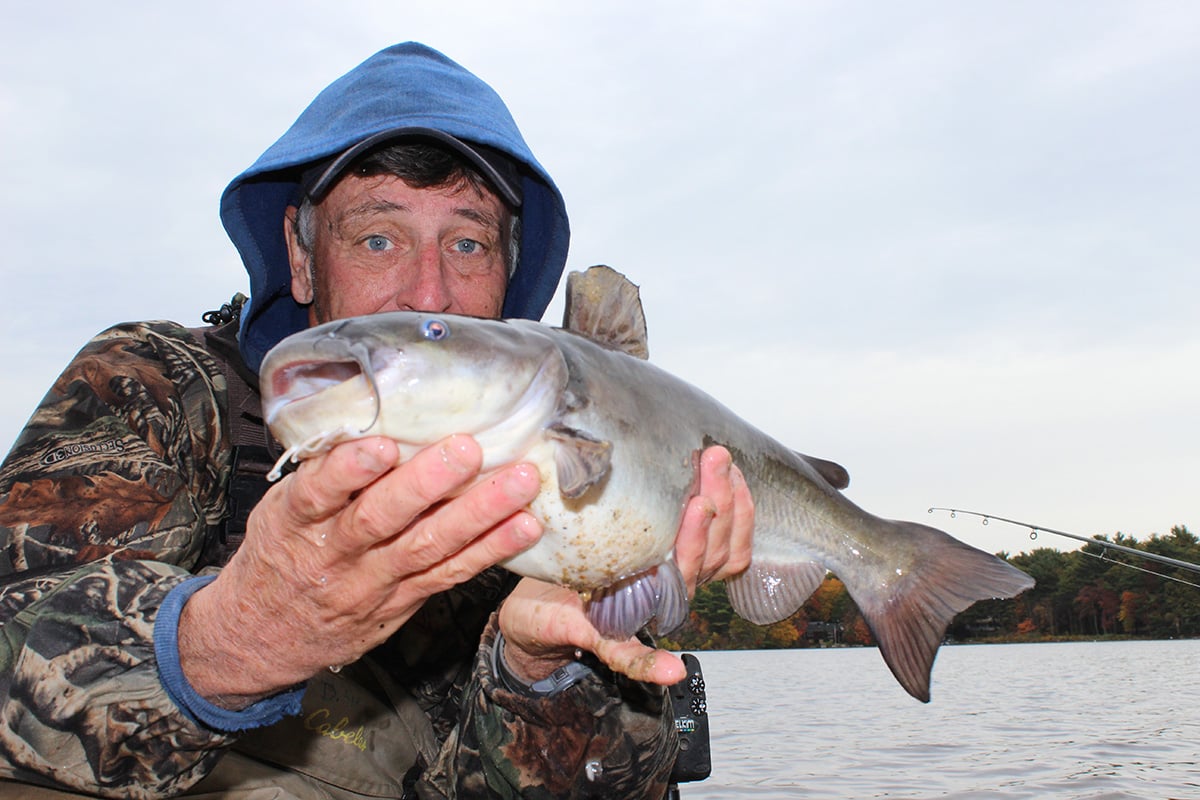
Spot Within the Spots
Arguably, next up is the most important step, finding your spot. When fishing a lake or pond, I find that deeper flats around 18 feet of water are great for producing cats. When fishing a river, similar to spring trout fishing, it is best to find a break in the heavy current, again keeping depth in consideration. As far as bottom structure goes, I like a flat sand or mud. It’s best to stay away from rocky areas as they can be prone to snags and hang-ups. Large channel catfish have also been known to hold in areas where timber is present, similar to largemouth bass. If you can find a pocket of deep, slow-moving water where you can present your bait, some channel catfish should show up to the party. Surprisingly, these bottom dwellers can even be caught in brackish water, so don’t count out your favorite tidal river.
Next is timing. Like most fish, channel catfish are most active during dawn and dusk, but some of the best action occurs after the sun goes down. Nighttime channel catfishing can be a lot of fun and a great way to spend an evening in the early summer. Flashlights and insect repellent are things to consider bringing on your trip as the mosquitoes can get quite thick in the evening, and it’s always nice to be able to shed some light on your fishing spot. Other tools include strike indicators such as rod tip lights or bells, which allow the angler to fish multiple rods and know when a catfish is coming in to strike. There are not many more exciting sounds to a night time angler than the jingle of a rod tip bell!
So if you are tired of catching small panfish and are looking for a little bigger gamefish to play with, I would definitely suggest trying your local channel catfish spot. Who knows, you might even catch the “Catfish Fever.” Good luck, and stay safe on the water!
| Local State Records |
|---|
|
New Hampshire Massachusetts Rhode Island Connecticut |

